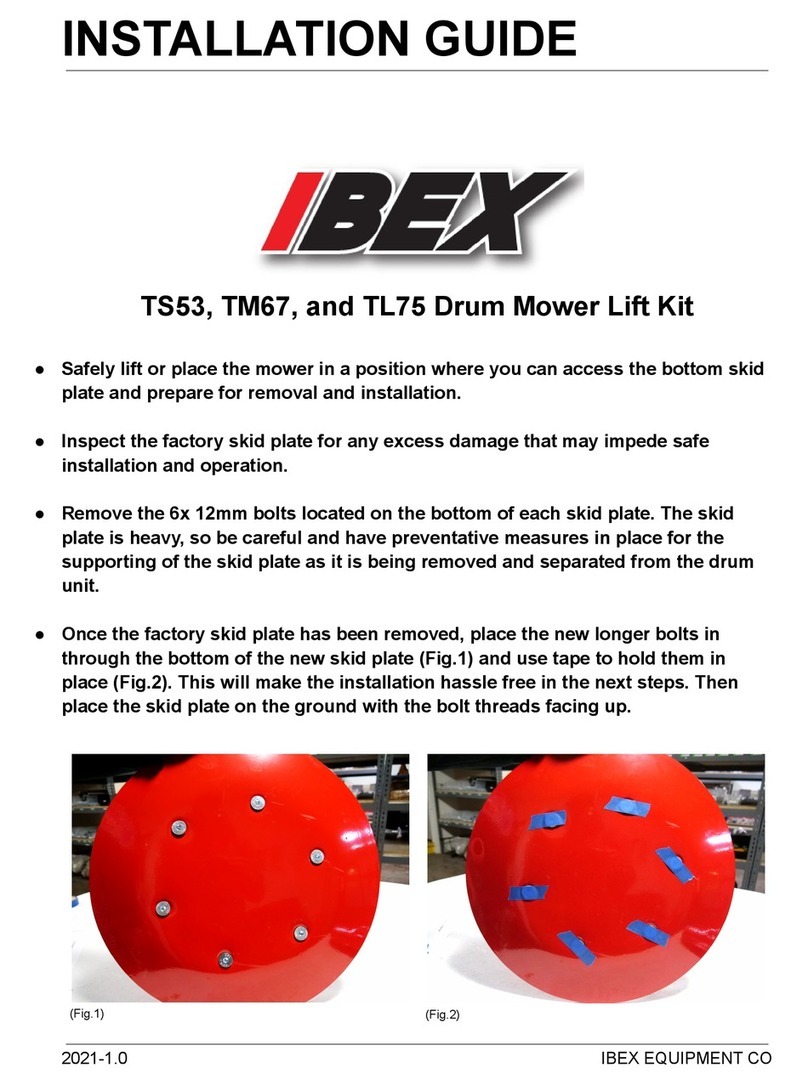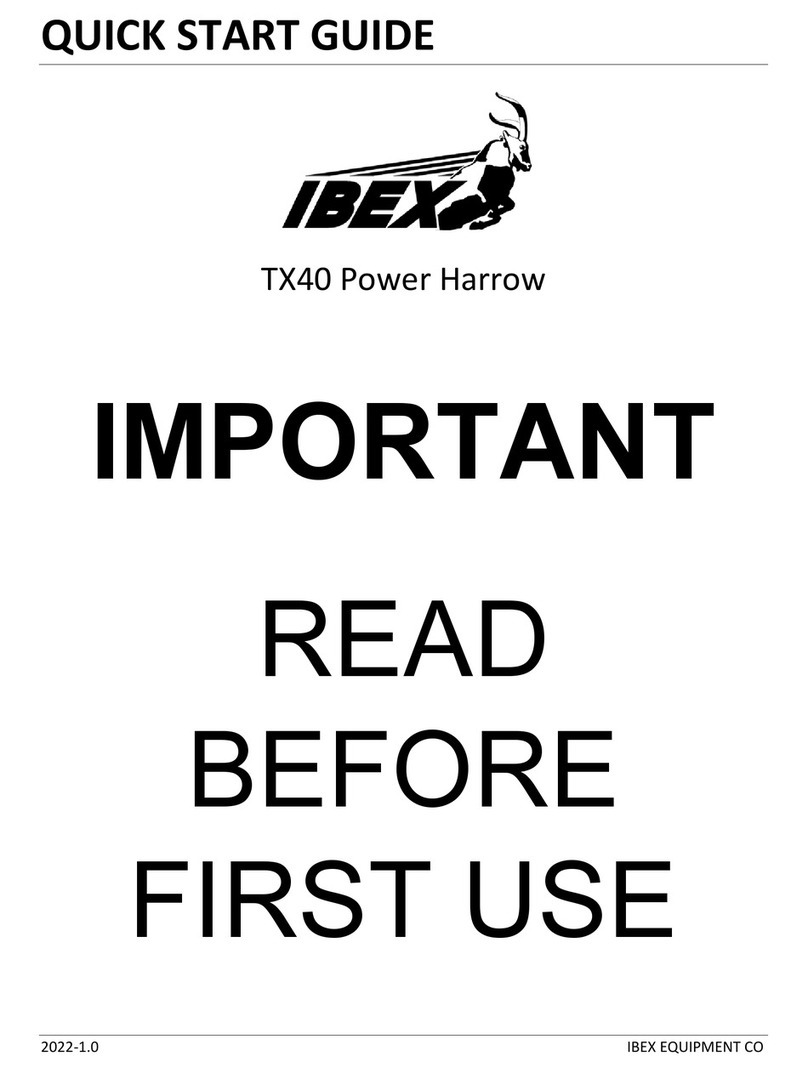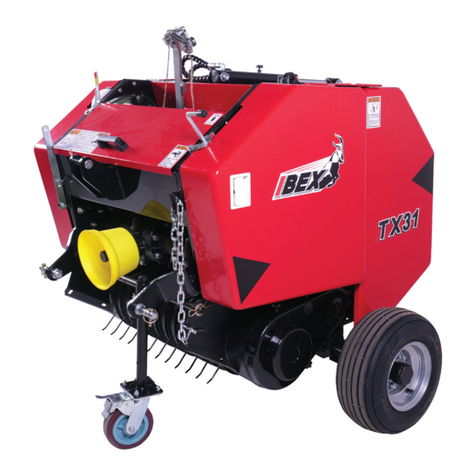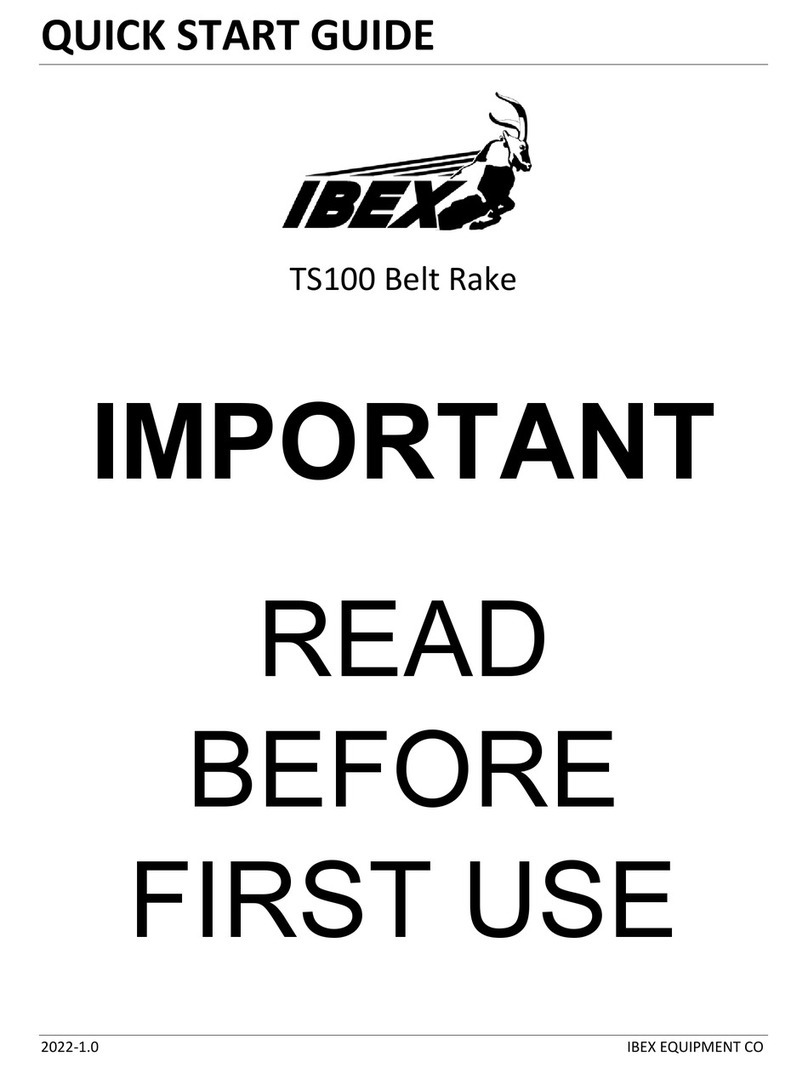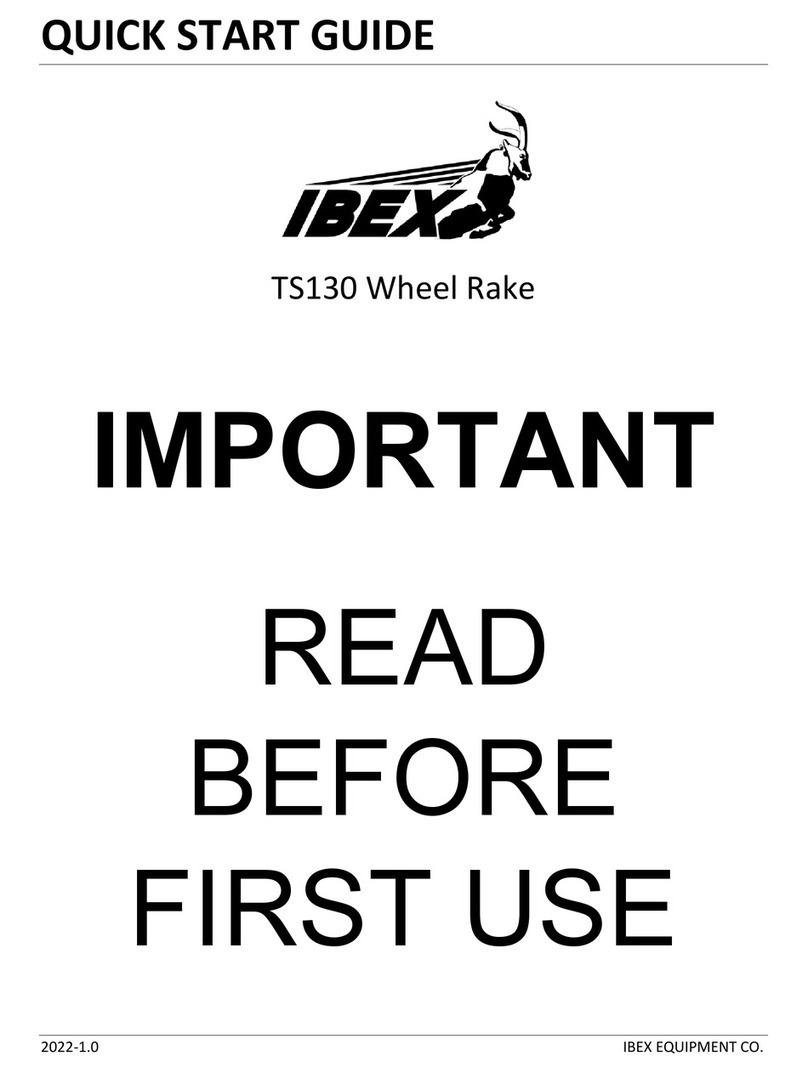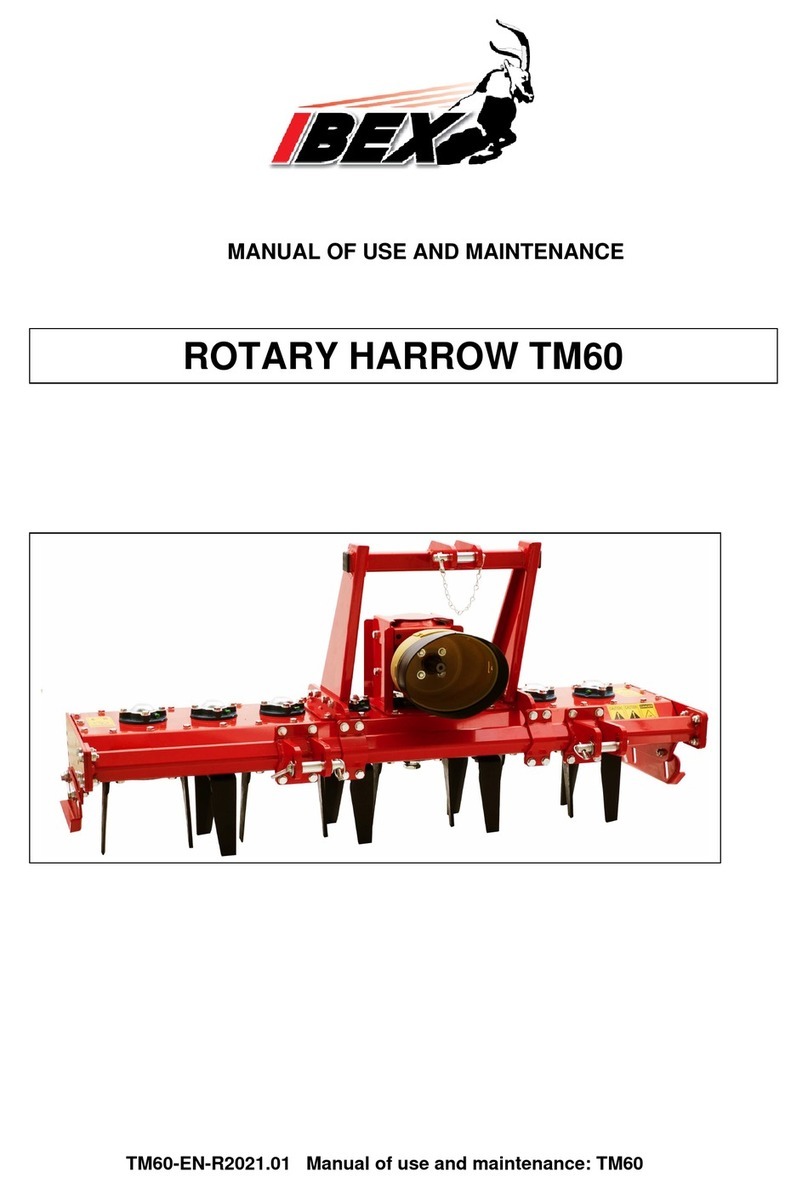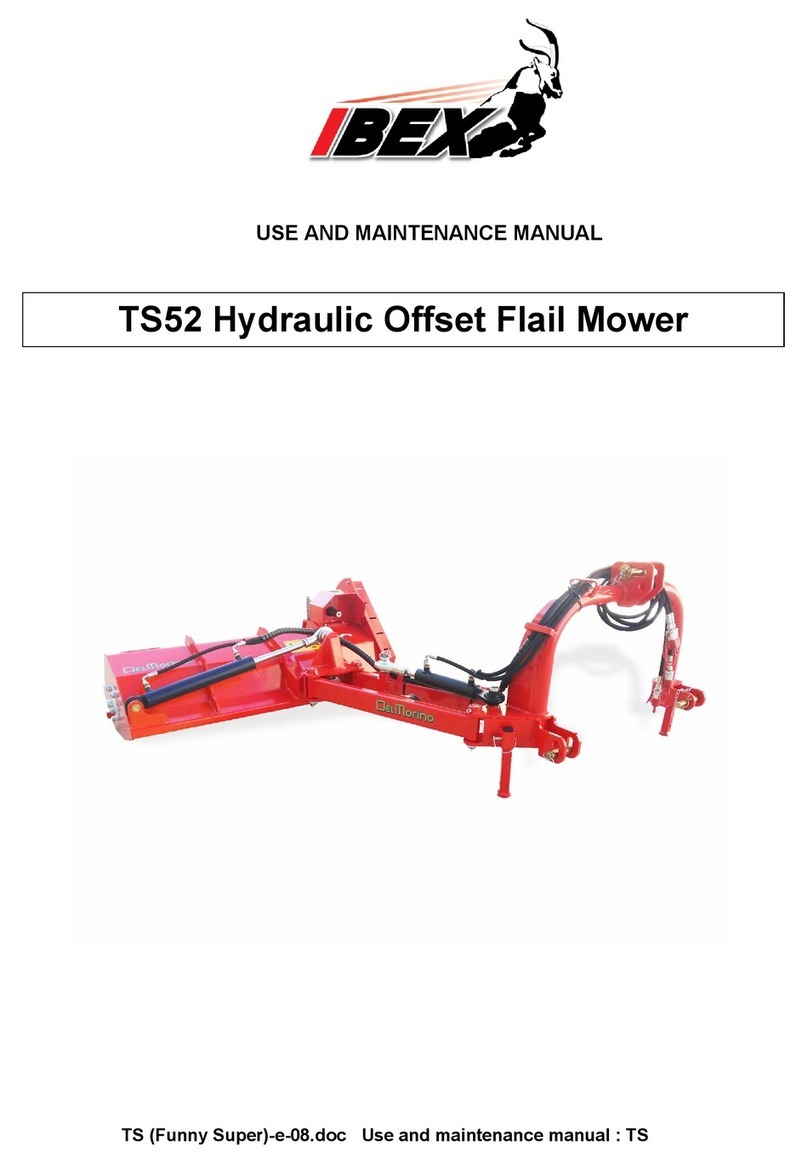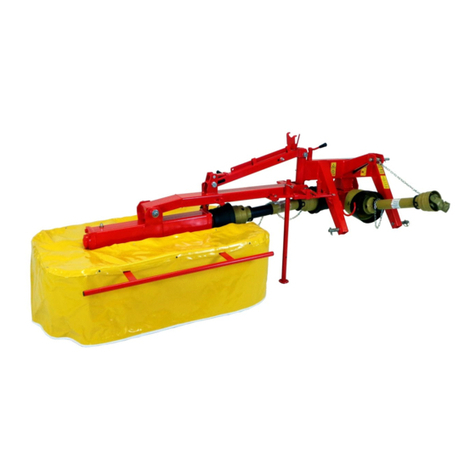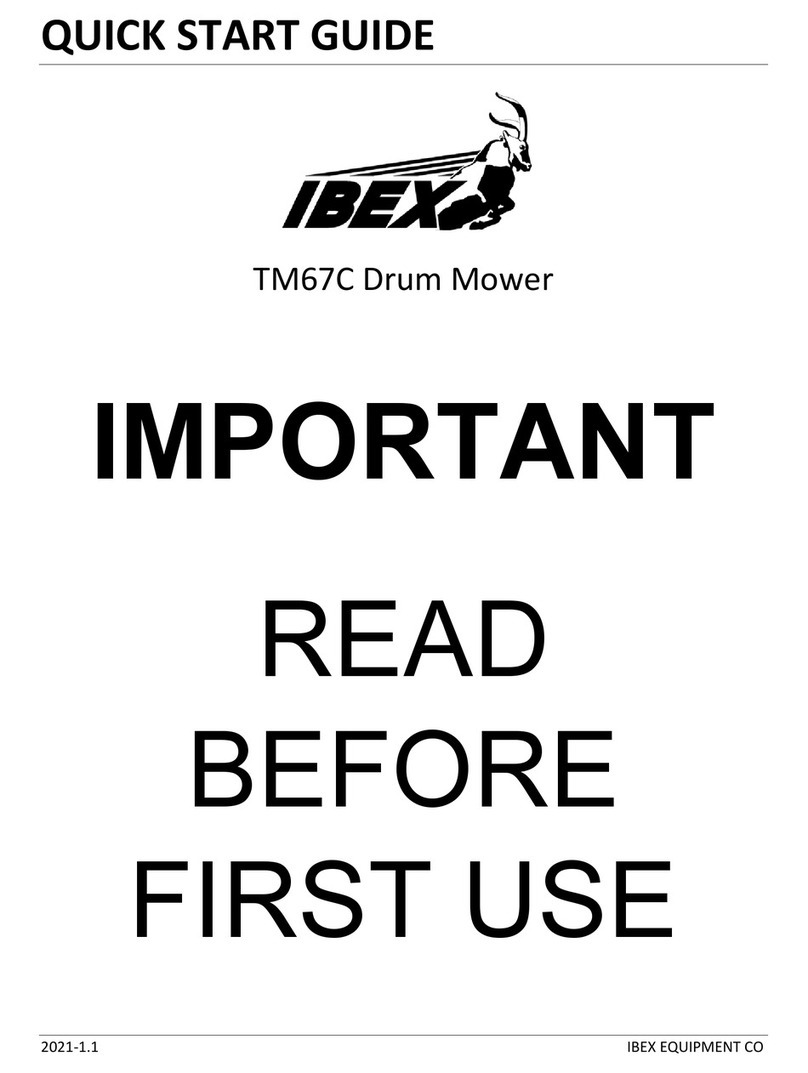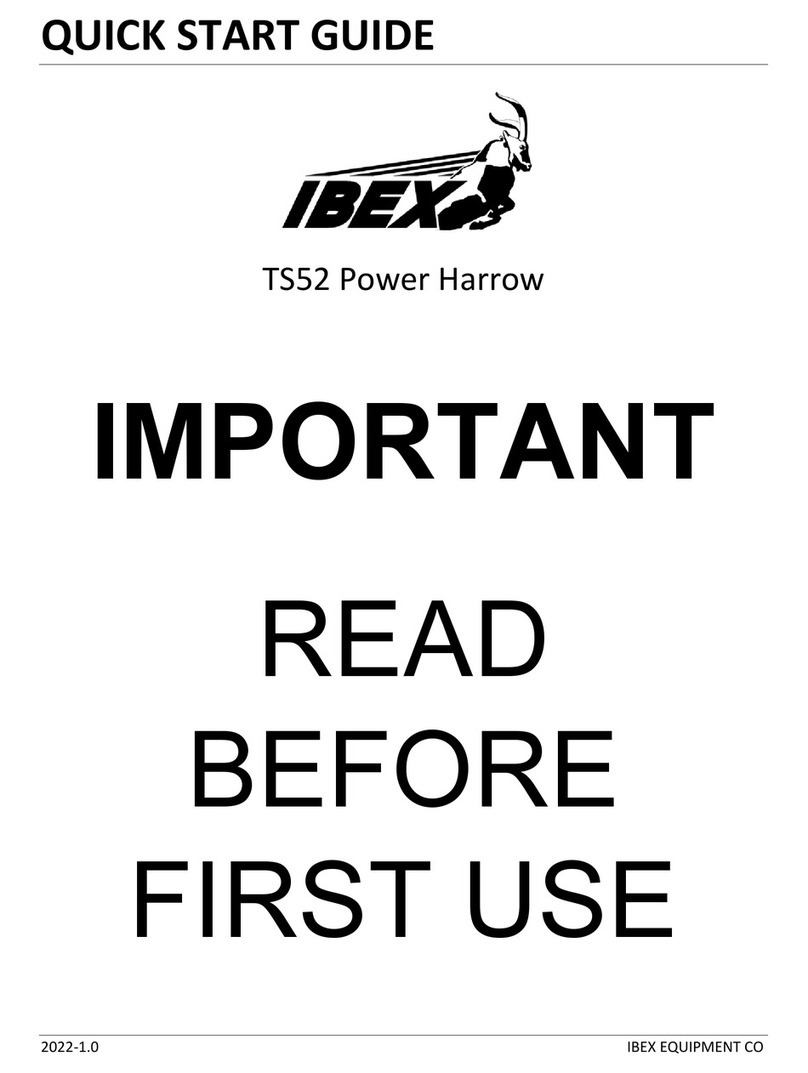
CAUTION: This machine should
never be operated by anyone who
is not
familiar with the product
and has note read the instruction
manual. Do not operate the rake
where people or animals are in the
immediate area.
IMPORTANT: When this machine is traded or
sold, make sure this manual accompanies the
machine so future operators will have complete
operating instructions and safety warnings avail-
able to them.
NOTE: All reference number used in the assem-
bly instructions correspond to the item numbers
used in the parts breakdown section of this man-
ual. When left or right-hand position are men-
tioned, they refer to the position as viewed from
the rear of the machine while facing the tractor.
ASSEMBLY
Note: The assembly steps below are for the in-
line four (4) wheel model. Assembly of the two
(2) wheel and four (4) wheel v-rake models is
similar. The wheel arms and wheels attach in the
same way. Note the wheel orientation in the pic-
ture on p.4.
1. Install the Pivot Support (8) on the 3-Point
Base (1). Insert the 3-Point Cap (17) and se-
cure in place with a cap screw and locknut
through the cap and base. Lock the support
plate in position on the 3-pont base with a 3-
Point Pin (10) secured with a Hairpin Cotter
(9). See illustration 1.
2. Install the Stand (3) on the 3-pont linkage and
secure with a spring clip. See Illustration 2.
3. With the assembly laying on the ground so the
sector plate’s lower socket
the Floating Arm (26) into the socket and secure
with a Sector Support Pin (15), two flat washers
(32) and two Cotter Pins (14). Lock the floating
arm in position by installing the Lock Plate (27)
on the bottom
of the arm and secure with a
Hairpin Cotter (4). See Illustration 2.
4.
Install the two Extension Springs (21) in the
plate near the top of the pivot support and then
connect the oth
er ends of the springs to the
Lower Spring Mount (23). Secure the lower
spring mount to the floating arm using a cap
screw and nut. Use the center hole for the time
being. After final assembly, move
mount necessary to allow the rake to “float” in
operation. See Illustration 2.
5. Insert the Main Frame (33) into the Floating Arm
(26). Lock the arm in place by installing the
Lever Plate (16) on the floating arm and secure
with a pin and retaining rings. Insert a Snapper
Safety Pin (19) to lock the stop plate and secure
with a hairpin cotter. See Illustration 3.
6. Install the Wheel Arms (34) in the main frame
and secure the Lever Plates (16) with a pin and
retaining rings and a snapper safety pin. See Il-
lustration 4.
CAUTION: Make sure the machine is
supported as the main frame and
wheel arms are installed to prevent
the machine from falling.






